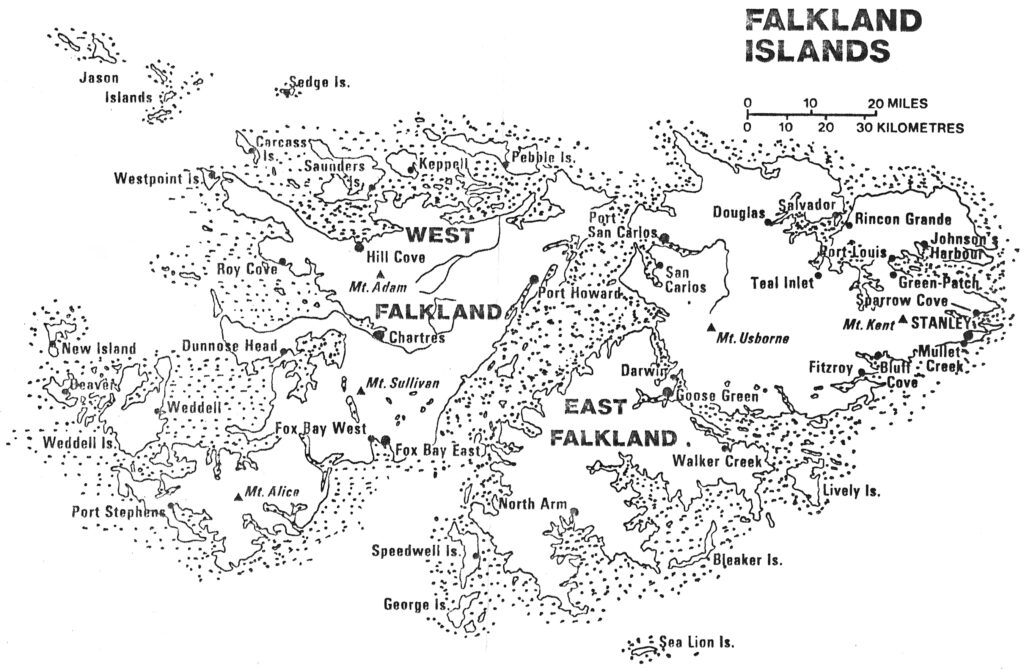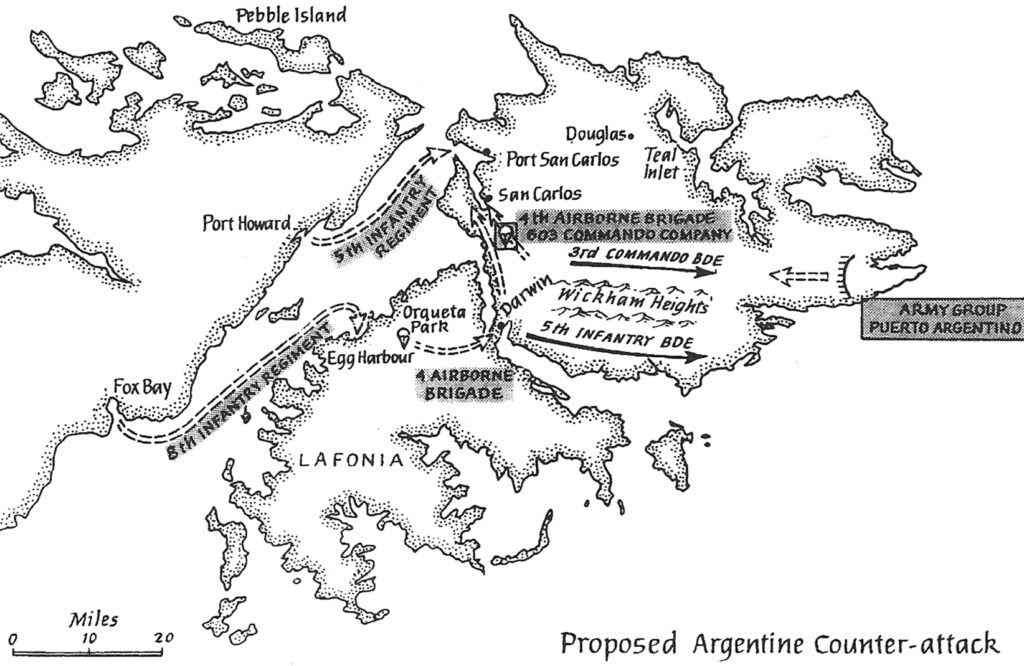Life in Military Intelligence During the Falklands War by Nick van der Bijl
Military Intelligence can be divided into two principal elements. Operational Intelligence is the pro-active provision of strategic and operational capabilities in time to be of use. Intelligence is widely used, for instance the scout checking out an opposing team, businesses assessing competitors and conducting a medical check on a patient claiming an ailment. The trick is to convert that information of intelligence into long term and short use. Provided information is handled with logic, common sense and sensitivity, it can be converted into timely intelligence in time to be of use. While not an exact science because little may be known about an enemy, as was the case throughout Operation Corporate, or because the enemy has taken countermeasures to hoodwink, confuse and mislead, which was not the case.
Field Security is the second vital arm of vital, but often, forgotten of addressing threats of espionage, subversion, sabotage and terrorism, and the defensive measures to minimise the risks.

Successive British Governments rarely assessed Argentina to be a threat to the Falklands, despite 142 years of hostility. This assessment led to a failure to collect and collate information on the Argentine Armed Forces. Argentine intelligence was well prepared, except for their conclusion that Great Britain would not respond to a ‘coup d’état’ because of her overseas treaty commitments and operations in Northern Ireland since 1969. Intelligence was crucial. But there was one fundamental factor. While the Army had an effective Defence Intelligence structure, the Royal Navy did not when it came to supporting Royal Marines deployments.
When the Falklands Task Force, peacetime need to know rules were applied and the little military intelligence that emerged from Defence Intelligence required special handling and therefore had limited distribution. The result was that 3 Commando Brigade, who needed the information, already isolated on ship, were denied knowledge of the enemy. In contrast, the Army experience defending Belize against Guatemalan and Hong Kong against the Chinese had effective intelligence organisations and an existing intelligence section was moved to support HQ Commander-in-Chief Fleet at Northwood. Several other intelligence organisations were mobilised. The application of intelligence principles and knowledge meant that an intelligence flow developed from Northwood to 3 Commando and 5th Infantry Brigades and their units, the aim being the front-line had the best intelligence available. A significant risk at Ascension was the disclosure of plans, morale and operations by embedded and excitable journalists, who had little appreciation of their role in war, one of which is security. During one early air raid on Argentine position, one journalist described, ‘I counted them all out, I counted them all in’.
By the time that 3 Commando Brigade departed Ascension Island after a three-week stopover, it had calculated a decent organisation of the three enemy Army Groups at Stanley defending the town, Goose Green defending East Falklands and at Fox Bay on West Falklands. By D-Day on 21 May, the Brigade had an accurate estimate of enemy deployments, strengths and weaknesses, orders of battles and probable intentions. The Special Boat Service collected a considerable amount of pre-landing intelligence. Air photographic intelligence analysts on HMS Hermes competed with aircraft on other tasks, such as fighter ground attack.
The lack of information on enemy offensive tactics was a concern, however when the enemy remained inside strongholds, this was less of a concern and at the end of May, as 5th Infantry Brigade landed at San Carlos and headed to toward Goose Green, 3 Commando Brigade broke out of the San Carlos beachhead on 27 May and headed north-east. Meanwhile, Northwood insisted that Goose Green be attacked, even though the enemy garrison was analysed to pose little threat. Some have suggested the battle was an intelligence. How could it be after seven weeks of intelligence collection? A guiding principle of command is that commanders assess and take responsibility for operational intelligence supplied. Mixed messages do not help. Intelligence do not fight battles. Commanders do.
Human intelligence was crucial. Information from Falkland Islanders repatriated to the UK was the equivalent of local knowledge and resulted in sketches of settlements. Interrogation was largely organised at Brigade. Prisoners included a sergeant captured on the day of the landings who had been in Goose Green for six weeks, a marine lieutenant-commander, a pilot at Goose Green, three forward air controller and an infantry regiment commanding officer. After the Argentina surrendered conditionally on 14 June, several thousand prisoners were repatriated within the week, except for 600 prisoners who were retained until Argentina surrendered unconditionally. But, despite of the British presence in Belize and Gibraltar, lack of Spanish interpreters was a weakness.
Documentary Intelligence is as important as Human Intelligence. Examples included the seizure on D-Day of a chart showing the organisation of an infantry company and a document found in a dugout in early June listing Army Group Stanley by name and strength; it matched the Brigade Intelligence assessment.

Field Security is vital, but often forgotten. While espionage, subversion and sabotage after the San Carlos Water landings at San Carlos were almost non-existent, the risk rose on entering Stanley. HQ Land Forces FI ran an intelligence operation immediately after the Argentines surrendered.
In conclusion, Military Intelligence at all levels from the Ministry of Defence down to the unit intelligence sections rose to challenge. 3 Commando Brigade was fortunate that it had a Brigade Commander who recognised the principles and limitations of intelligence.
In his Post Operation Report, Brigadier Julian Thompson wrote:
As the Brigade Commander, what impressed me most was the quality of the intelligence assessments that were produced from quite early on and right through the campaign by the Intelligence staffs in my superior HQ and in my own HQ. The pièce de résistance was the identification of positions occupied by the Argentine regiments before we landed, which proved amazingly accurate. I also felt that the way the Intelligence staffs in the theatre of operations coped with the interrogation of prisoners, a mammoth task, when one considers the numbers taken, and the short time available in which to process them, was a model of efficiency and humanity.
Nick van der Bijl's book My Friends, The Enemy: Life in Military Intelligence During the Falklands War is available for purchase now.



